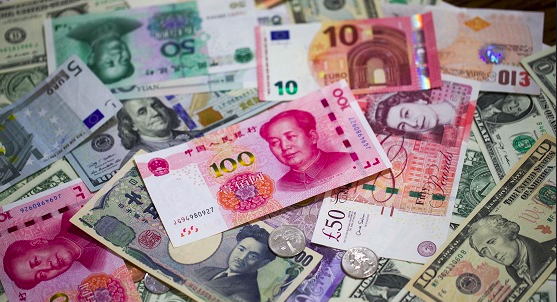China cannot replace the US at the centre of the international economic system - but the SDR can
In part one of this series, we argued that with Trump’s introduction of tariffs and the increasing risk of a trade war, the probability of international economic system (IES) collapse has increased. The tariffs are more than just a short-term tool to punish China; they symbolize the start of a process where the United States rejects its role at the heart of the IES. While Trump’s trade policies fit with his narrative of “America First”, and may well lower the current account deficit – they crucially also erode the US’ ability to lead the IES. It has become fashionable to say that the United States retreating from its role at the heart of the IES will create a window of opportunity for China to take its place. Yet, this is something China is incapable of doing, more importantly, it is not something it should want to do.
China’s growth model has relied on the persistence of current account surpluses and the export of capital. On the contrary, to be at the centre of today’s system requires open financial markets that absorb global capital and a willingness to run persistent trade deficits.
Given the importance of trade surpluses to China’s growth and the reluctance to liberalise its capital account, it’s unlikely China will be willing to accept the costs of leadership that come with being at the centre of the IES. Moreover, an IES with a single country and currency at its heart (as the US has realised) means that sole country is likely to become strained by debt build-up, lose competitiveness internationally and risk higher unemployment.
Instead of changing the actor at the core of the system, it would be better to reconsider the design of the system itself. A better system would not have the dollar or the renminbi at its heart, nor any other currency. That’s because any IES built on one country, on one currency, will tend towards instability.
Whilst the Bretton Woods system was operational between 1945 and 1971, it brought about one of the greatest periods of economic stability in history. It was a system of monetary management and fixed exchange rates that established rules for capital and trade flows. By tying their currencies to the dollar which in turn was pegged to gold, countries were automatically, through the functioning of the system, able to rectify any temporary imbalances on the balance of payments. Moreover, countries were not able to amass foreign currency reserves and hence exploit the system through competitive currency devaluations. The system worked because automatic gold flows occurred to counterbalance any imbalances in the system. Of course, the ultimate collapse of the Bretton Woods system tells us the system was not perfect; indeed, Keynes may well have been farsighted in the 1940s when he argued that having a single currency, the dollar, at the centre of the system would lead to instability. However, the automatic adjustment mechanisms through gold flows would have been useful in today’s context where we have seen huge and systemic trade and capital imbalances develop.
Attempts to reform the IES are not new. In 2010 at the G20 summit in Korea, the US proposed that countries brought down their current account balances to no more than plus or minus 4% of GDP. This was vetoed, and instead countries pledged to ensure “excessive” current account balances did not prevail, without ever specifying what “excessive” meant. A voluntary system in resolving global trade and capital imbalances is unlikely to hold, instead a new system has to be binding, automatic, and impossible to manipulate. That was Keynes’ rationale when he argued in the 1940s against Harry Dexter White as to what currency should lie at the heart of the Bretton Woods system. Keynes had proposed a currency based on the values of 30 representative commodities (the Bancor), while White had advocated the dollar. Given the US’ pre-eminence in the global economy at the time, White was victorious, but Keynes was ultimately proved right by the collapse of the Bretton Woods system. Keynes’ insights are just as valid today, and the need to build a global monetary system without a single currency at its heart is becoming increasingly important.
In that regard, the Special Drawing Right (SDR), a super-sovereign currency, may fit those criteria. The SDR was created by the IMF in 1969 when the shortcomings of the Bretton Woods system were being realized. It is a basket of five currencies of different weightings; these are the dollar (41.73%), euro (30.93%), renminbi (10.92%), yen (8.33%) and pound sterling (8.09%).
Up to now, the SDR has seen limited traction; by September 2017 the IMF had issued SDRs equivalent to $291 billion, too small to be a reliable source of global liquidity. However, given the current backdrop and higher probability of a trade war and system collapse, the SDR could be pushed as a new centrepiece of the IES. To elevate the SDR to the centre of the IES will require considerable political vision and persuading countries who have benefited considerably from the existing system to turn away from it.
As argued by, Erten and Ocampo (2012), it “requires turning the SDR into a pure reserve asset and the IMF into a fully SDR funded institution. SDRs would then be issued counter-cyclically and treated as deposits of countries in the IMF, which can in turn lend to countries”. The IMF should then issue SDR denominated bonds as an alternative to US treasuries/other liquid assets and “promote the use of the SDR in international trade, commodities pricing, investment and corporate book-keeping” (Zhou, 2009). By doing this, the IMF, as the issuer and regulator of global liquidity could ensure independence. No longer would there exist a conflict of interests between the domestic and international objectives of a single reserve currency nation.
The SDR would reduce the formation of global trade and capital imbalances. Under a dollar based monetary system, many countries peg their currencies to the dollar. So when the dollar tries to depreciate to reduce economic imbalances, the effect is weakened by countries who follow suit and also depreciate. With the SDR at the heart of the system, as the dollar depreciates, the SDR will either depreciate by proportionately less, or not change significantly if other countries in the basket appreciate. Moreover, when central banks purchase SDRs, they are “implicitly spreading their reserve accumulation away from dollars and into those other currencies. In doing so, any country that tries to generate large trade surpluses by accumulating reserves would be forcing the corresponding deficit not just onto the U.S. economy, but also onto those of other countries” (Pettis, 2013). Such a system would reduce the size and persistence of the imbalances that characterize the existing IES.
China clearly has an interest in ensuring a more stable international economic system; the renminbi’s admission to the SDR in 2016 and the recent introduction of the petroyuan show that China’s global monetary policy clout is growing and that it is in a position to champion reform. Confronted with a choice of reforming the IES, or facing collapse, the world should first and foremost choose reform. Reforming the IES with a super-sovereign currency at its heart would be more sustainable, but requires considerable political vision. Yet, with the imposition of Trump’s tariffs and a higher probability of a trade war, the prospect of collapse draws closer. Collapse may well bring ultimately bring reform, but there would be significant adjustment costs in the process. The question remains whether nations will choose the amicable way through cooperation, dialogue and reform, or the uncooperative way through protectionism and system collapse. In a world of messy politics that neglects good economics, the prospect of the latter grows by the day.
This is part two of a two-part series that discusses Trump’s tariffs, China’s response and global capital and trade flows.
Photo credit: IMF

